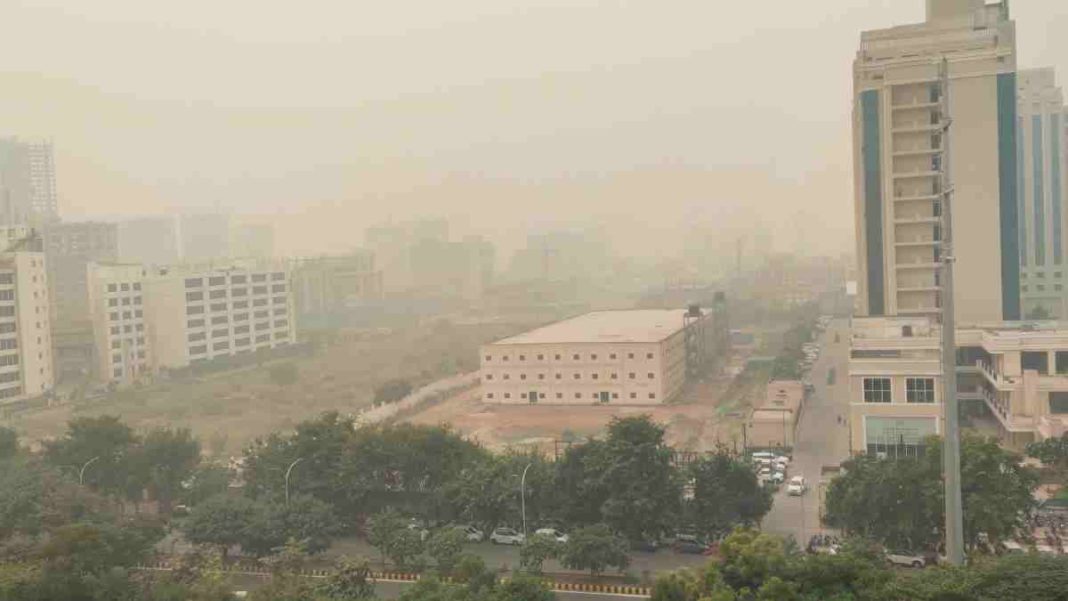INDIA: The national capital of India is grappling with a severe air pollution crisis as the air quality index (AQI) in most areas soared to dangerous levels, crossing the 400 mark, leaving residents and wildlife gasping for clean air.
The relentless toxic smog, a persistent issue in recent years, has prompted urgent measures to mitigate its devastating effects.
According to data from the Central Pollution Control Board (CPCB), several key areas in Delhi woke up to alarming AQI readings on Sunday. In Ayanagar, the AQI reached a staggering 464, while Dwarka Sector-8 recorded an AQI of 486. In Jahangirpuri, the AQI was 463, and around the Indira Gandhi International Airport (T3), it reached 480, all far above safe levels.
For the average healthy person, an AQI below 50 is recommended. However, in recent days, the AQI has surged well beyond 400, posing a severe risk to those suffering from respiratory ailments and even raising concerns about an increased risk of lung cancer.
Notably, the concentration of poisonous PM2.5 particles remained over 80 times the limit recommended by the World Health Organization.
The crisis isn’t limited to human health alone; it’s also taking a toll on the city’s wildlife. Veterinarian Haravtar Singh reported that as the city’s air quality deteriorated, about ten birds were brought in with breathing problems.
Birds, especially pigeons, are being affected by the pollution, given their prevalence in the national capital. Every day, a multitude of bird species are being admitted to local hospitals in an injured state, suffering from various health issues due to the polluted environment.
To address the plight of animals, the National Zoological Park has implemented preventive measures. They have increased the frequency of water sprinkling in animal enclosures to maintain hydration levels and have introduced diets enriched with multivitamins to mitigate the impact of the polluted air on the animals’ health.
Additionally, the Municipal Corporation of Delhi (MCD) has taken stern actions to combat the pollution. A total of 517 surveillance teams, comprising 1,119 officers, have been deployed to monitor open burning, illegal construction, waste dumping, and dust on the city’s roads. MCD is strictly adhering to the Winter Action Plan (WAP)-2023-24.
For violations related to construction and demolition (C&D) waste norms, MCD has issued 91 challans and imposed fines totaling Rs. 11.8 lakh. During October, 163 challans were issued, amounting to Rs. 34 lakhs, at C&D sites for norm violations. Furthermore, MCD teams have issued eight challans for dust norm violations at construction sites, with fines totaling Rs. 25 lakh.
MCD has also imposed 13 challans for illegal garbage dumping, resulting in a fine of ₹36,000. They have taken action against unauthorized coal tandoors, seizing 38 of them. Additionally, four counters were seized for using coal to prepare food.
In a bid to mitigate dust pollution, MCD has deployed 225 water sprinklers, including 30 mobile anti-smog guns, on the city’s main roads. These measures are critical in the ongoing fight to curb the severe air pollution crisis in Delhi.
Also Read: Study Shows Air Pollution’s Alarming Threat to Life Expectancy in South Asia



